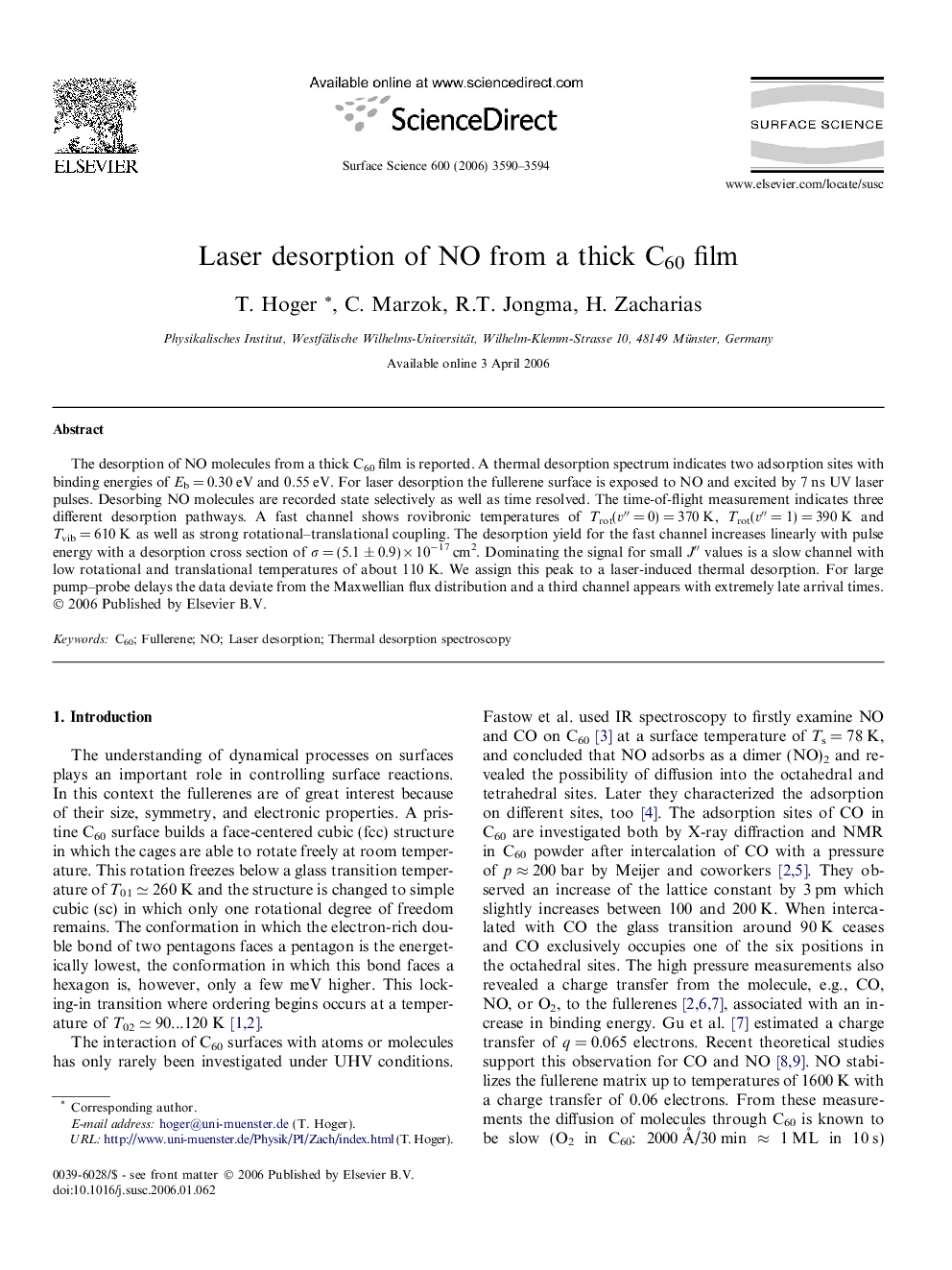| Article ID | Journal | Published Year | Pages | File Type |
|---|---|---|---|---|
| 5426387 | Surface Science | 2006 | 5 Pages |
The desorption of NO molecules from a thick C60 film is reported. A thermal desorption spectrum indicates two adsorption sites with binding energies of Eb = 0.30 eV and 0.55 eV. For laser desorption the fullerene surface is exposed to NO and excited by 7 ns UV laser pulses. Desorbing NO molecules are recorded state selectively as well as time resolved. The time-of-flight measurement indicates three different desorption pathways. A fast channel shows rovibronic temperatures of Trot(vâ³Â = 0) = 370 K, Trot(vâ³Â = 1) = 390 K and Tvib = 610 K as well as strong rotational-translational coupling. The desorption yield for the fast channel increases linearly with pulse energy with a desorption cross section of Ï = (5.1 ± 0.9) Ã 10â17 cm2. Dominating the signal for small Jâ³ values is a slow channel with low rotational and translational temperatures of about 110 K. We assign this peak to a laser-induced thermal desorption. For large pump-probe delays the data deviate from the Maxwellian flux distribution and a third channel appears with extremely late arrival times.
